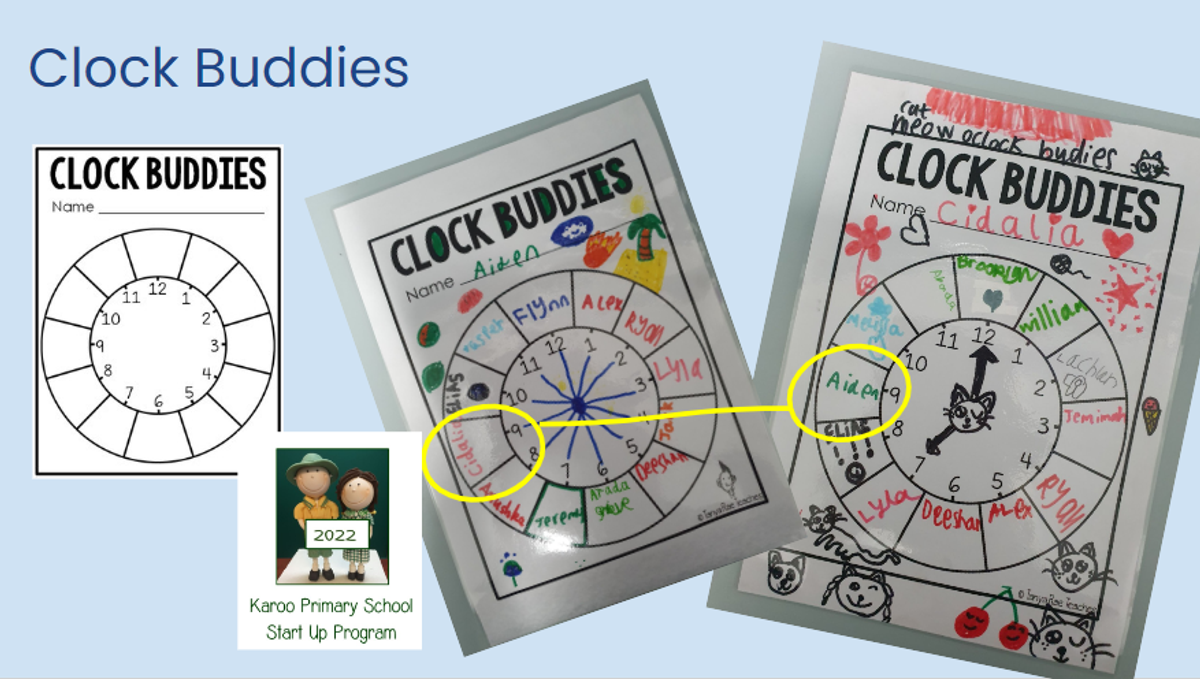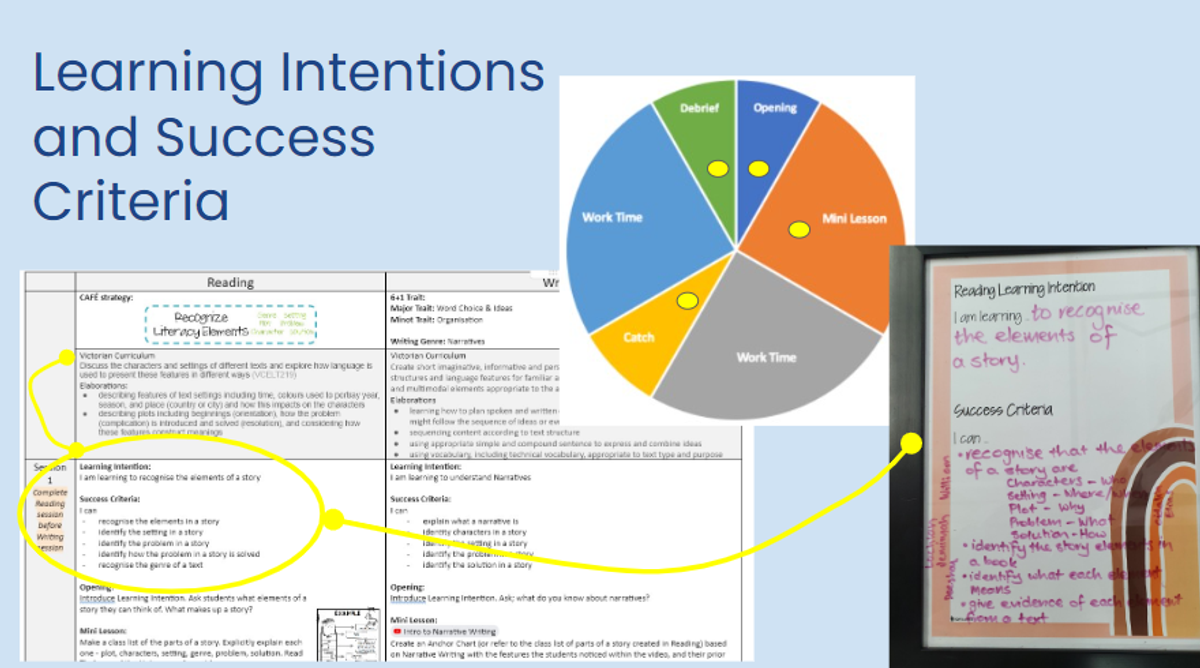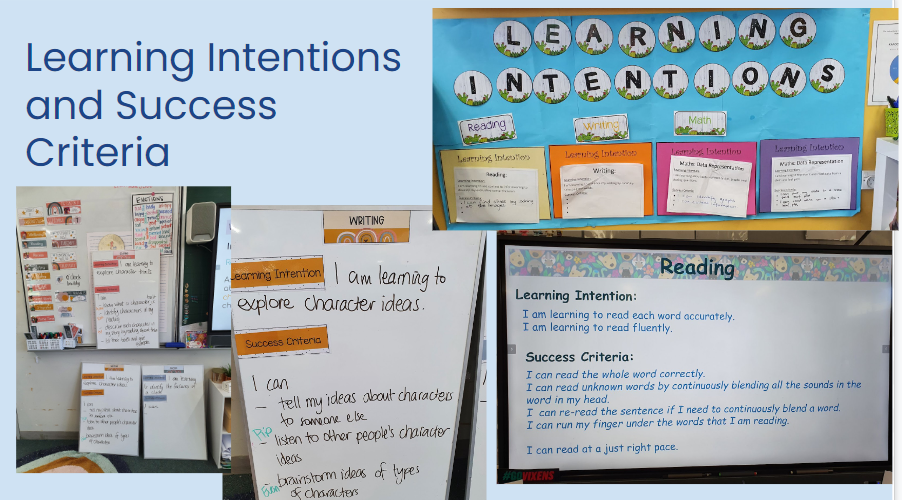Assistant Principal - Teaching and Learning
Ms Ashley Kuusela

Assistant Principal - Teaching and Learning
Ms Ashley Kuusela
This is the last of a series of three newsletter editions in which we have shared some of the ways teachers are supporting our students’ oral language and vocabulary development (and confidence)!
Specifically, Mrs. Karen Corrales shares below, ways we use Clock Buddies, as well as Learning Intentions and Success Criteria here at Karoo PS.
What Are Clock Buddies?
Clock Buddies are meant to be a quick and easy way to create pairs for partnered activities while avoiding the problem of kids always having the same partners, or not having one at all. Clock buddies are a classroom tool utilised at Karoo across all levels for a number of years now. It is embedded practice.
Right from Week 1 Term 1, as part of our start up program, students are given the opportunity to have agency over their learning by choosing their clock buddies.
The use of clock buddies promotes critical thinking, shared knowledge and most importantly, is an excellent facilitator of oral language.
We use clock buddies multiple times each day from turn and talk, building success criteria, exploring the meaning of new language, experimenting with ideas before writing and even partnering up for peer editing.
This year students in 2C reflected that at the beginning of the year they maybe didn’t make the best choices when choosing a clock buddy and asked to redo their list. So that is exactly what they did at the start of Term 3. This has also allowed all students to work with different students from their class, throughout the year.


Learning Intentions and Success Criteria
Learning Intentions are descriptions of what learners should know, understand and be able to do by the end of a session or a group of sessions. They are not what the activities are that the students are going to complete during the lesson. They are the skill/s we are developing.
Learning intentions are the basis for tracking student progress, providing feedback and assessing achievement. This can be achieved by using ‘at a glance sheets’, which support teachers to track students’ progress against the learning intentions and also the success criteria.
Success criteria are the measures which both students and teachers use to determine whether, and how well, learners have met the learning intentions; breaking down the learning intention into measurable steps. They ensure all students know what they are going to learn and where they are heading.
Learning intentions and success criteria are most effective when they are:




These pictures are some examples across a range of year levels as to how learning intentions and success criteria and shared and recorded with our students.
I would like to extend a huge thank you to Mrs Corrales, Mrs Marker and Mrs Ellis for volunteering their time and sharing their expertise with both the teaching community as well as our parent community.
Perhaps you can ask your child/ren who their clock buddy was today, what they discussed together and how they found success in their learning.
See you about the school,
Ms Ashley Kuusela

